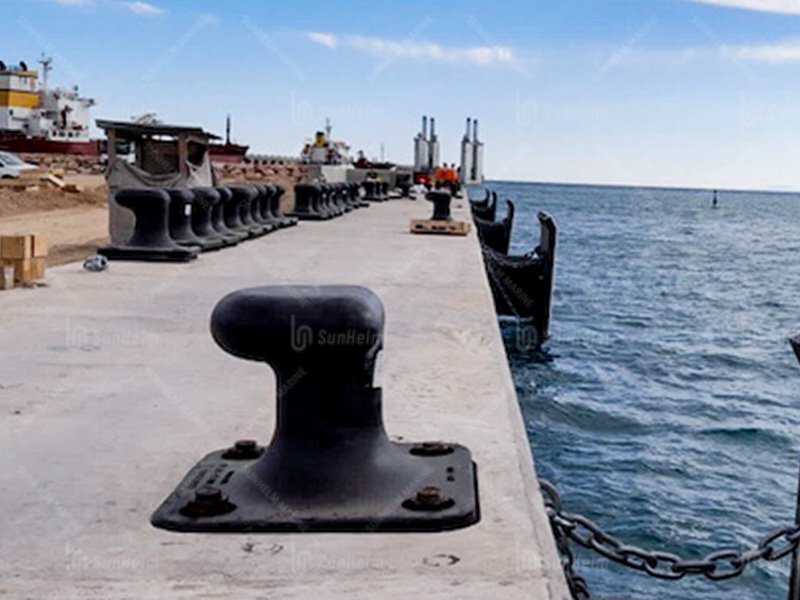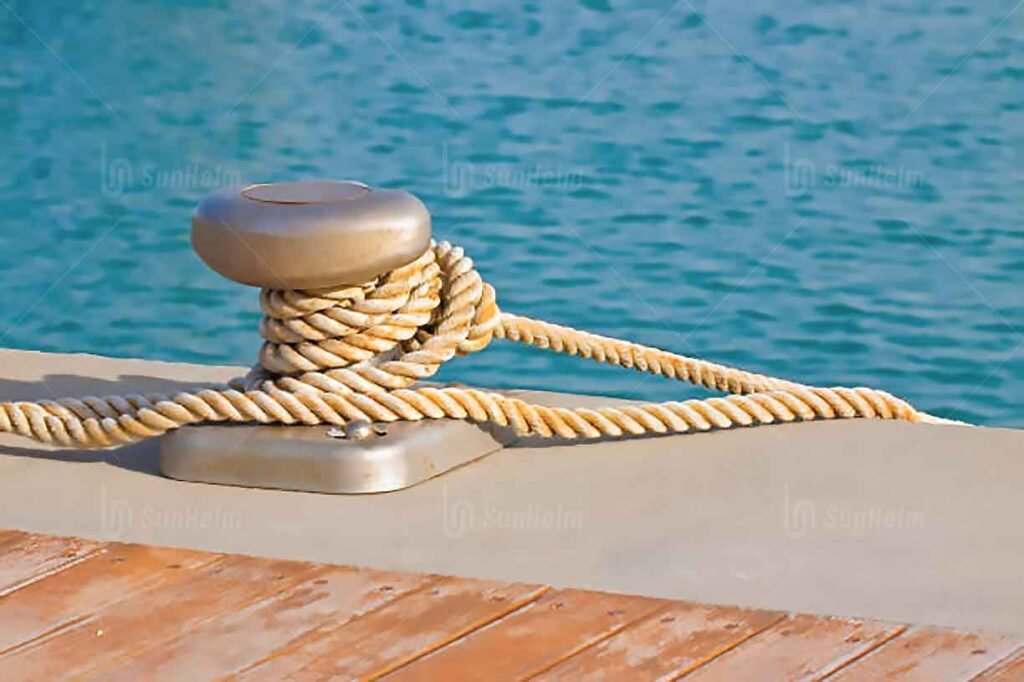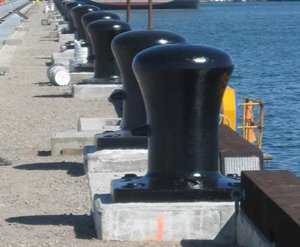You design safe ports. You run busy berths. Small parts make a big difference — and mooring bollards are one of those parts. This short, clear guide explains what marine mooring bollards do, why they matter, and how the right choice saves money, time, and risk. Read it fast. Use it when you spec, buy, or upgrade mooring gear.

What a bollard actually does
A marine mooring bollard gives the ship a strong, fixed point to tie mooring lines. It takes the pull from lines and sends that load into the quay or deck. In plain terms: bollards hold ships steady, protect berths, and keep cargo and people safe. They are simple, but they are the backbone of every mooring system.
Common bollard types (and when to use them)
Designers and operators use different shapes for different needs:
- Single bitt / pillar — easy to handle, common on piers and small berths.
- Double bitt — good for big ships and heavy loads.
- Horn / stag-horn / tee-head — let you wrap multiple lines and control line angles.
Different shapes help crews handle lines faster and reduce line wear. Pick the shape that matches your ship mix and handling practice.
Design, sizing, and placement — quick rules that matter
Place bollards where ships actually need them. Good rules of thumb used by port engineers:
- Space bollards commonly at 15–30 m or roughly 15% of the shortest ship length to cover typical mooring lines.
- Size bollards by the likely maximum mooring load; recognized design guides (e.g., BS6349 methods) show how to calculate probable peak loads from ship size, tide, wind, and elastic line behavior. You should follow local codes and recognized standards when you pick capacity and layout.

Material and corrosion: choose for life-cycle cost, not just price
Bollards come in cast steel, ductile iron, stainless steel and sometimes welded steel. Material choice affects lifetime cost:
- Ductile iron often resists marine corrosion better than plain cast steel and needs less frequent repainting.
- Steel marine mooring bollards need good coatings, galvanizing, or regular painting to keep strength and appearance.
Pick materials and coatings for your water type (salty, brackish), maintenance plan, and expected life. That choice saves money over 10–20 years.
Safety and maintenance — keep bollards trustworthy
A bollard works only if it stays tight and sound. Regular checks catch loose bolts, cracked welds, surface wear, and corrosion before they become failures. Include simple inspection steps in your operations plan and record them. Well-maintained marine mooring bollards cut the risk of line slips, broken lines, and berth damage — and they protect crew and cargo.
Why the right bollard pays back
Investing in the right bollard layout and build gives you:
- Fewer mooring incidents (safer operations).
- Lower lifetime cost (less repainting and fewer replacements).
- Faster mooring (less berth time, higher throughput).
- Standards compliance (easier approvals and insurance).
All of these improve berth availability and the port’s bottom line.
Quick selection checklist for port designers / operators
When you specify or buy bollards, confirm these items:
- Design load / SWL — ask for tested working load and safety factor.
- Type and shape — match to vessel types and mooring angles.
- Material & coating — choose for local corrosion risk and maintenance intervals.
- Mounting & foundation — ensure deck or quay can take dynamic loads.
- Spacing & layout — follow local design guides (e.g., 15–30 m spacing rule) and coordinate with fender positions.
- Inspection & spare parts — plan routine checks and keep bolts/anchors on hand.
Short closing — what to do next
When you plan or upgrade a berth, treat bollards as a design item, not a cheap add-on. Ask suppliers for certified load data, material certificates, and installation guidance. If you want, I can help you turn the checklist above into a short technical spec you can send to vendors or your procurement team.
FAQ
Q: How do I know the right bollard size for my port?
A: Start with the biggest ship you plan to berth. Calculate its mooring load using wind, tide, and line type. Then choose a bollard with a Safe Working Load (SWL) that covers that peak load with a safety margin.
Q: How far apart should bollards be placed?
A: A good rule is 15–30 meters apart, or about 15% of the shortest ship length you expect. Always check local design codes before finalizing.
Q: Which bollard type is best for mixed vessel sizes?
A: Tee-head or horn bollards work well because they handle multiple line angles. They’re flexible for ports that host both small and large ships.
Q: What is the most durable bollard material?
A: Ductile iron often performs best in marine conditions because it resists corrosion and impact. But stainless steel or coated cast steel can also work if you follow a strict maintenance plan.
Q: How often should bollards be inspected?
A: Do a quick visual check weekly, and a full inspection at least once a year. Look for loose bolts, cracks, or corrosion. Replace or repair right away if you see damage.


